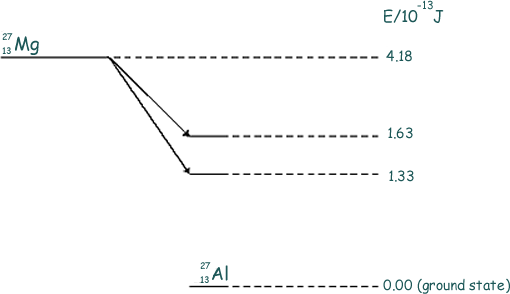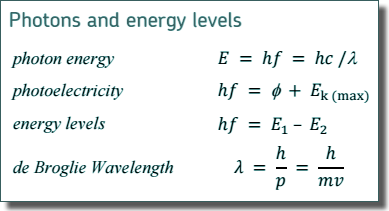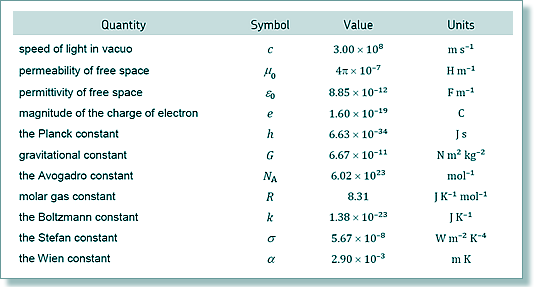A Level: Radioactivity Questions
Q14.
The diagram below shows a grid of neutron number against proton number. A nucleus  is marked in place:
is marked in place:

(a) Draw arrows on the grid, each starting on X and ending on a daughter nucleus after the following transitions:
(i) β– emission (label this arrow A), neutron emission (label this arrow B), electron capture (label this arrow C).
(ii) Give the equation for electron capture by the nucleus  .
.
(4 marks)
(b) When  decays to
decays to  by β– decay, the daughter nucleus is produced in one of two possible excited states. These two states are shown in below together with their corresponding energies.
by β– decay, the daughter nucleus is produced in one of two possible excited states. These two states are shown in below together with their corresponding energies.

(i) Calculate the maximum possible kinetic energy, in J, which an emitted β– particle can have.(ii) The excited aluminium nuclei emit γ-photons. Calculate each of the three possible γ-photon energies
(iii) Calculate the frequency of the most energetic photon emitted.


(3 marks)
(c)
(i) State and explain two precautions that should be taken when working with a sample of  in a school laboratory.
in a school laboratory.
(ii) Discuss which of the two types of radiation, β– or γ, emitted from a sample of  would be the more hazardous.
would be the more hazardous.
(3 marks)
(Total 10 marks)



